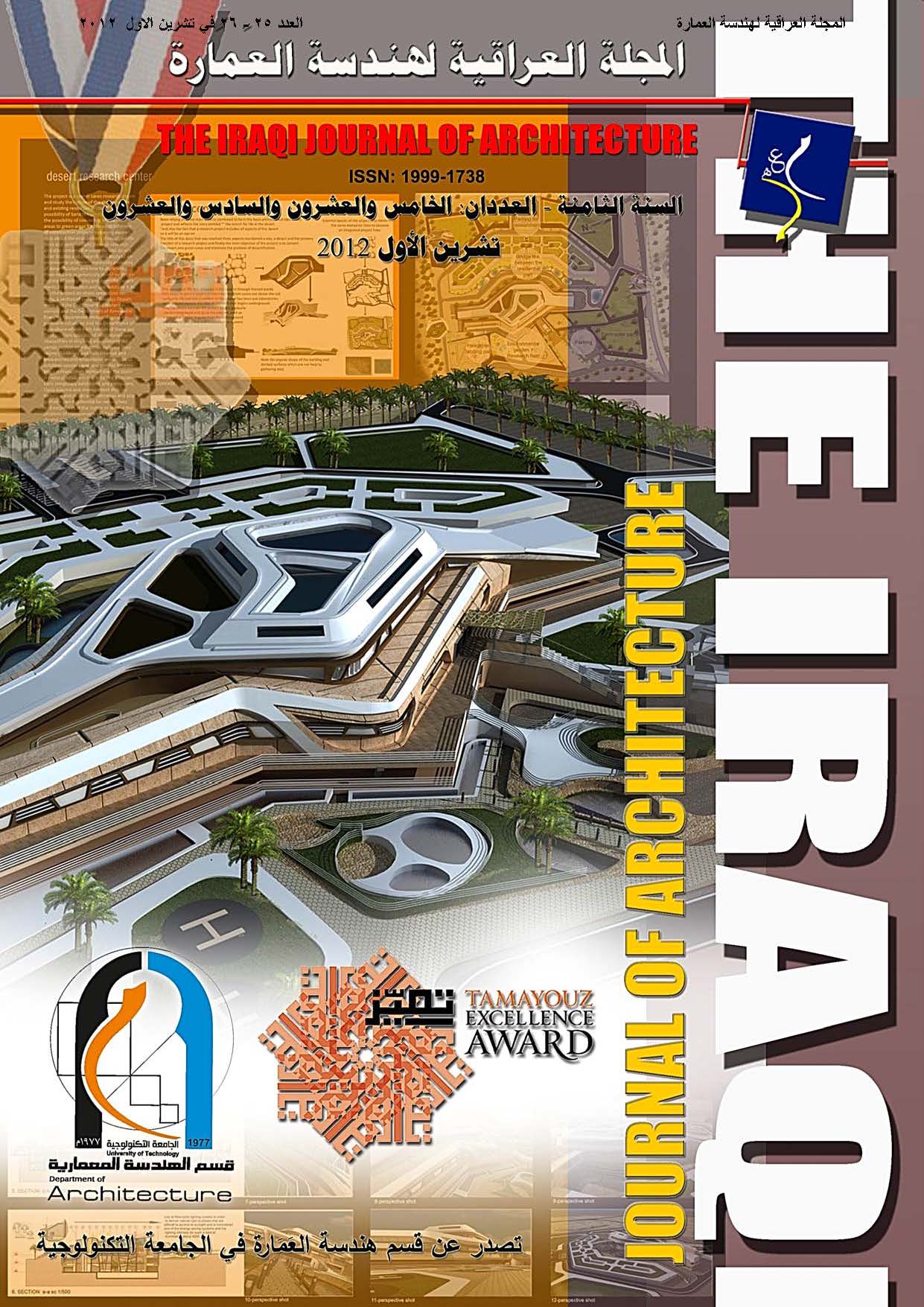The effect of spatial and visual configuration of museums in the formation of visiting patterns
A comparative study between Iraqi and International museum buildings
Abstract
Museums add cultural and social values to their societies, by transferring knowledge to the visitors through their exhibits. Accordingly, movement/visibility relation is considered as a crucial aspect in explaining spatial manners of museums, and direct operator in the formation of visiting patterns. The relation between both faces of museum's spatial configuration (movement axes, and visibility network), represents phenomena that lacks adequate research endeavors, despite its importance in the formation of visiting experiment patterns. Accordingly, the study aims to explain this relation. Using the comparative analysis methodology between Iraqi and international museum buildings. The results show full coincidence of the most integrated movement axes with the most integrated visibility areas, in some cases. And partial coincidence in others. With special syntactic position for Gathering Spaces in Museums.
Downloads
References
4- Braaksma, J P and Cook, W J, (1980), “Human orientation in transportation terminals", Transportation Engineering Journal 106(TE2), P: 189–203.
5- Brösamle M, Hölscher C.(2007).†How do Humans Interpret Configuration?†Proceedings of the Sixth International Space Syntax Symposium, ITU, Istanbul.
6- Choi, Yoon K.,(1997)," The morphology of exploration and encounter in museum layouts ', Proceedings of the First Space Syntax Symposium, London.
7- Falk J. H. (1982) "The use of time as a measure of visitor behavior and exhibit effectiveness", Roundtable Reports: The Journal of Museum Education, 7(4), P: 10
8- Franz G, Wiener J M.( 2005).†Exploring isovist-based correlates of spatial behavior and experience.†Proceedings of the Fifth Space Syntax Symposium, Delft,P: 503-517.
9- Gibson, J J. (1979). The Ecological Approach to Visual Perception. Boston: Houghton Mifflin.
10- Hillier B.(1996),â€Space is the machineâ€, Cambridge: Cambridge University Press, P:94
11- Jordanova, L. (1989).†Objects of knowledge: A historical perspective on museums.â€Vergo, P. (Ed.). The New Museology. London: Reaktion Books,P: 22-40.
12- Lewis, G., (2010),"The History of Museums", Encyclopedia Britannica, Ultimate Reference Suite.P:1.
13- Peponis J, Zimring C, and Choi Y K. (1990).†Finding the Building in Wayfinding.†Environment and Behavior, Sep 1990; 22,P: 555 – 590.
14- Peponis, J. and Hedin, J. (1982)," The layout of theories in the natural history museum , in: 9H", (3), London, P: 21-25.
15- Rohloff, Ipek Kaynar(2009)†Experiencing Museum Gallery Layouts through Local and Global Visibility Properties in Morphologyâ€, Proceedings of the 7th International Space Syntax Symposium, Stockholm,P:2.
16- Rosenblatt, Arthur.(2001),†Building Type Basics for Museums, Building Type Basics Seriesâ€, John Wiley & Sons, Inc. (US).
17- Sandifer, C. (1997),"Time-Based Behaviors at an Interactive Science Museum",Science Education, 81, P: 689-701.
18- Turner, Alasdair.,(2004)," Depthmap 4, A Researcher's Handbook.", Bartlett School of Graduate Studies, UCL, London.P:7.
19- Tzortzi, K.,(2009)," The Art Museum as a City or a Machine for Showing Art?",Proceedings of the 7th International Space Syntax Symposium, Stockholm.
20- Zamani,P,(2009)," Architecture as Curatorial Device", Proceedings of the 7th International Space Syntax Symposium, Stockholm.
You are free to use the work, but you have to attribute (refer to) the work in the manner specified by the author or licensor (but not in any way that suggests that they endorse you or your use of the work).
IRAQI J. ARCHIT & PLANN grants you the right to publish the metadata of the journal, it's issues and articles under the terms of the Creative Commons Attribution-ShareAlike 4.0 International License.
Author(s) hold the copyright of their aricles without restrictions. However, IRAQI J. ARCHIT & PLANN holds publishing rights for articles and their revisions once the article is published.
Authors can archive pre-prints (ie pre-refereeing) and post-prints (i.e. final draft post-refereeing) versions of the work they submitted to IRAQI J. ARCHIT & PLANN using non-for-profit open-access servers whether on author's personal website and/or institutional repositories including the university or research center where the author work.. For post-prints, only the IRAQI J. ARCHIT & PLANN’s as-published PDF version is permitted and the published source (IRAQI J. ARCHIT & PLANN’s website) must be clearly acknowledged within the archiving webpage.






